Join More Than 50,000+ Subscribers and get latest camera news and rumors
NEW CAMERA VIDEOS ON YOUTUBE
|
By admin, on December 17th, 2024
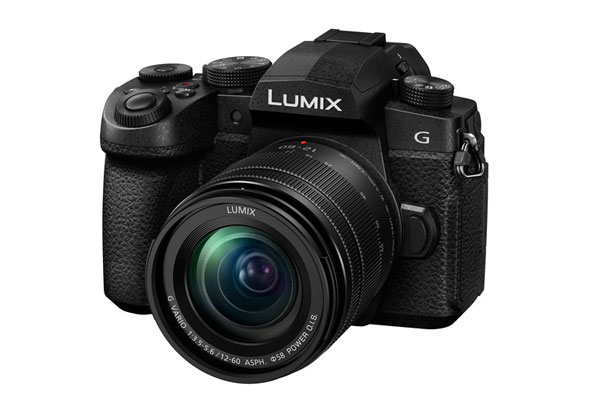
Panasonic silently updated its camera in the past due to the display screen supply line production issue (see here). Again, they faced the same problem with the G90 camera, so this time they had to make a bit more significant update and re-launch it as a brand-new camera.
So this time, they have not only updated the screen but also upscaled all possible core specifications. Possible for that particular price range with the available resources.
The first major update you will notice this time is the display screen, which is now 1.84 Million dots, The resolution of the screen is somewhere around 1.4 million dots. The electronic viewfinder of the camera remains the same with 2.36 million dot resolution, which is quite reasonable within the price range.
The sensor and image processor of the camera remain the same, but we do have some minor updates all over the body. So let’s discuss that.
We have Single card slots, which are compatible with UHS-II cards, a headphone port, a micro-HDMI port, and a USB-C port, and with that port, you can now also charge your battery.
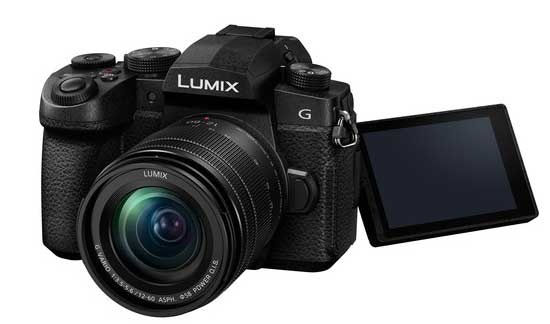
The menu system has been slightly upscaled to make it better. Now it looks very similar to the new S5 II and S5 IIX cameras.
Unfortunately, we are getting the same 20-megapixel sensor of the G90 or G95 camera with the DFD autofocusing system, which clearly means the autofocus will be slow and will include a lot of focus hunting in low-light situations. Thanks to the new image sensors of Panasonic introduced in the Panasonic GH7 camera, which now has 25-megapixel resolution and hybrid autofocusing points. The same technology exists in the full-frame S5 II and S5 IIX cameras, which now use a hybrid phase-detection autofocus sensor of 24MP resolution.
So, that’s a very welcome upgrade Panasonic has done recently with their new range of cameras, but the older series with DFD autofocusing systems remains in its place.
Let’s talk about the video recording capability of the camera. With the recently announced Panasonic G97, you can record 4K videos up to 30 frames per second and Full HD videos up to 120 frames per second.
The best thing about the Panasonic G97 camera is the built-in 5-stop image stabilization system, which is very, very effective while shooting video on the go. It manages the camera shake that most professional cameras are not able to handle even with their 7-8 stops of IBIS.
But again, the issue with the 4K recording is a 1.25x crop, even at 4K 30 frames per second. So, if you are using a 16mm lens, the resulting output will be somewhere around 20mm. If you want to create vlogs with the camera, you have to buy a lens like a 9mm F1.7 aperture lens, which is also not too expensive and can be used for day-to-day vlogging purposes.
Other upgrades include Bluetooth, which has been upscaled to 5.0 from 4.2, and with the help of the upscaled Bluetooth chip, you can now synchronize your camera with the Lumix Sync app. With the help of the app, you can try new LUTs as well as transfer your images seamlessly on the go.
More or less, it was the need of the time to refresh the display screen of the camera due to production line issues coming out from the display makers. But Panasonic made a smart move to update the overall core specifications of the camera and made it slightly more usable for today’s generation at a budget price range.
Panasonic G97 Major Features
- 20.3MP Digital Live MOS Sensor
- Venus Engine Processor
- New USB-C Power and Data Connectivity
- Bluetooth 5.0 Low Energy (LE)
- 2.4 GHz Wi-Fi Connectivity
- UHD 4K Video Recording at 30p (8-bit 4:2:0)
- External UHD 4K Recording via micro-HDMI (4:2:2 8-bit)
- Pre-Installed V-Log L for Flat Gamma Recording
- Slow Motion Video Recording at 60 fps in Full HD
- 5-Axis Sensor-Shift Image Stabilization
- Dual I.S. 2 with Compatible Lenses (Up to 5 Stops)
- 3.0″ 1.84m-Dot OLED Rear Touchscreen (Free-Angle Tilt and Swivel)
- 0.74x 2.36m-Dot OLED Live Viewfinder (LVF)
- Advanced DFD (Depth-From-Defocus) Autofocus System
- 49-Area Autofocus with Face/Eye Detection
- ISO Sensitivity up to ISO 25600
- Continuous Shooting at 9 fps (AF-S) and 6 fps (AF-C)
- 4K PHOTO Modes: Burst, Pre-Burst, and Burst (S/S)
- Magnesium Alloy Body with Splash and Dust Resistance
Additional Features:
- Battery Life: Approx. 290 shots (Standard) or 1,050 shots (Power Save LVF Mode)
- Focus Peaking and Touch MF Assist (20x Magnification)
- Electronic Shutter: Up to 1/16,000 sec
- Mechanical Shutter: Up to 1/4000 sec
- Live View Composite Recording
- Photo Style Modes (e.g., Vivid, Monochrome, Cinelike D)
- Filter Modes (e.g., Retro, High Key, Cross Process)
Comparison Table: Panasonic G97 vs G95
| Features |
Panasonic G97 |
Panasonic G95 |
Differences Highlighted |
| Design |
|
|
|
| Dimensions (W x H x D) |
130.4 x 93.5 x 77.4 mm |
130.4 x 94.3 x 77.1 mm |
G97 is slightly shorter in height (-0.8 mm). |
| Weight (Body Only) |
478 g |
536 g |
G97 is 58 g lighter. |
| Material |
Magnesium Alloy |
Magnesium Alloy |
No difference. |
| Monitor |
3.0” OLED, 1.84M dots, Articulating |
3.0” OLED, 1.24M dots, Articulating |
G97 has a higher-resolution display. |
| EVF Resolution |
2.36M dots, OLED |
2.36M dots, OLED |
No difference. |
| Viewfinder Magnification |
0.74x |
0.74x |
No difference. |
| Ports |
Micro-HDMI, USB-C, Headphone, Mic |
Micro-HDMI, USB 2.0, Headphone, Mic |
G97 upgraded to USB-C. |
| Bluetooth |
5.0 |
4.2 |
G97 has Bluetooth 5.0 (faster sync). |
| Battery Life |
Approx. 290 shots |
Approx. 290 shots |
No difference. |
| Photography Features |
|
|
|
| Sensor |
20.3 MP (4/3” MOS) |
20.3 MP (4/3” MOS) |
Same sensor resolution. |
| ISO Range (Photo) |
200–25,600 (Ext: 100–25,600) |
200–25,600 (Ext: 100–25,600) |
No difference. |
| Image Stabilization |
5-axis Sensor-Shift IS |
5-axis Sensor-Shift IS |
No difference. |
| Continuous Shooting |
9 fps (30 RAW, 600 JPEG) |
9 fps (30 RAW, unlimited JPEGs) |
G95 has unlimited JPEG buffer. |
| Metering Range |
0–18 EV |
0–18 EV |
No difference. |
| White Balance |
Auto, Presets, Custom |
Auto, Presets, Custom |
No difference. |
| Aspect Ratios |
1:1, 3:2, 4:3, 16:9 |
1:1, 3:2, 4:3, 16:9 |
No difference. |
| Videography Features |
|
|
|
| Internal Recording |
4K @ 30/24 fps (UHD, 100 Mbps) |
4K @ 30/24 fps (UHD, 100 Mbps) |
No difference. |
| 1080p Recording |
60/30 fps (20–28 Mbps) |
60/30 fps (20–28 Mbps) |
No difference. |
| Slow Motion |
1080p @ 120 fps |
1080p @ 120 fps |
No difference. |
| Crop Factor (4K) |
1.25x |
1.25x |
No difference. |
| External Recording |
DCI 4K via Micro-HDMI |
4K UHD via Micro-HDMI |
G97 offers DCI 4K output. |
| Recording Limit |
No limit |
No limit |
No difference. |
| Built-in Microphone |
Stereo |
Stereo |
No difference. |
| Audio Ports |
Mic + Headphone |
Mic + Headphone |
No difference. |
| Bluetooth and Wi-Fi |
BT 5.0, Wi-Fi 4 (802.11n) |
BT 4.2, Wi-Fi 4 (802.11n) |
G97 has Bluetooth 5.0. |
| Image Sync App |
Yes (Lumix Sync) |
Yes (Lumix Sync) |
No difference. |
Panasonic G97 Press Release
Panasonic Announces Two New Cameras:
Compact Micro Four Thirds LUMIX G97 and Pocket-Sized Travel Zoom LUMIX ZS99
Newark, N.J. (December 16, 2024) – Panasonic is pleased to introduce two new cameras to its LUMIX lineup: the Micro Four Thirds G97 and Travel Zoom ZS99.
The new LUMIX G97 and ZS99 offer a wide range of updated photo and video features to bring excellent image quality and usability to enthusiasts, photographers, and videographers alike.
LUMIX continues to develop its lineup to satisfy the needs of a wide range of creators and continually deliver value, innovation, and reliability to its customers.
LUMIX ZS99: New Pocket-sized Travel 30x Zoom Camera
Compact and feature-packed, the LUMIX ZS99 travel zoom camera is perfect for capturing life’s adventures.
Powerful 30x zoom in a pocket-sized body
Equipped with a 24-720mm LEICA DC lens*1, the LUMIX ZS99 offers 30x optical zoom and up to 60x with iZoom so that you can capture everything from sweeping landscapes to intricate details with stunning clarity.
With in-built 5-Axis HYBRID O.I.S.+, you can enjoy high-quality videos even at full zoom.
Unmissable Moments in 4K
Record high-quality 4K video at 30p or capture quick bursts of 4K PHOTO at 30fps to ensure you never miss a moment. Additionally, its ability to capture HD high-speed video at 120fps adds creative flexibility for slow-motion shots.
Packed with travel-ready features
A tiltable 1,840k-dot touchscreen makes creative angles easy, while USB Type-C charging ensures you’re always powered up on the go.
Easy image sharing
Connect instantly with built-in Bluetooth® v5.0*2 and Wi-Fi, plus a dedicated Send Image button for seamless transfers to your smartphone.
Price and availability
The new LUMIX ZS99 will be available in black (DC-ZS99E-K) and silver (DC-ZS99E-S) in mid-February 2025 for $499.99 at valued channel partners.
*1 35mm camera equivalent.
*2 The Bluetooth® word mark and logos are registered trademarks owned by Bluetooth SIG, Inc., and any use of such marks by Panasonic Corporation is under license. Other trademarks and trade names are those of their respective owners.
LUMIX G97: New Compact Hybrid Micro Four Thirds Camera
The new LUMIX G97 camera balances high performance and simplicity, giving creators the tools to elevate their photography and video skills.
Superb picture quality
The 20.3MP CMOS sensor, combined with the high-performance Image processor, delivers superb image quality with vibrant colors and sharp details.
Equipped with LUMIX Photo Style feature, users can fine-tune their images with a variety of color effect options, ensuring every shot matches your creative vision.
The Live View Composite feature is also included, providing the ability to combines multiple exposures in real time to create stunning light trails, star trails, or illuminated scenes without overexposing the background.
Smooth performance
The LUMIX G97’s 5-stop 5-axis Dual I.S.2*1 system ensures unrivalled stability, so your photos and videos remain sharp even in challenging conditions.
With 4K PHOTO capabilities, you can capture bursts of high-resolution photos at 30fps, ensuring you never miss a fleeting moment. The perfect shot from burst footage makes this feature ideal for fast-moving subjects or spontaneous scenes.
Versatile video features
Record in crisp 4K at 30p with no time limitations*2, experiment with slow-motion (max.4x) or quick-motion (max.8x) in FHD, and create cinematic content with 12-stops of V-Log L. Dedicated headphone and microphone jacks ensure total audio control while recording.
Intuitive operation and reliable design
With a 1,840k-dot free-angle LCD and 2,360k-dot OLED Live View Finder*3, the LUMIX G97 makes it easy to frame and focus your shots accurately, even in bright conditions.
The durable dust/splash-resistant*4 construction is ideal for everyday creators looking for a camera that can reliably handle a variety of situations.
Built-in Bluetooth® v5.0 and Wi-Fi make sharing and remote control effortless, while USB Type-C charging adds convenience.
Price and availability
The new LUMIX G97 will be available in late February 2025 for $849.99 for a 12-60mm lens kit (DC-G97MK) at valued channel partners.
By admin, on December 16th, 2024

Panasonic is planning to announce a compact camera in 2025, according to the latest rumors from Webio [take it with a grain of salt]. Panasonic is reportedly planning to announce a compact camera similar to Canon G7X Mark III, specifically designed for content creators. This camera is under development and expected to arrive in the first half of 2025.
When I visited the Panasonic Lumix websites of several countries, I noticed that most of their compact cameras are either out of production or out of stock. Currently, the only compact camera active in their production line is the Lumix FZ80. Even retailers are no longer accepting any orders of Panasonic compact camera models.
It’s hard to believe this rumor, seeing that most of their cameras are out of production. They may either launch a brand-new series specifically for content creators or revive one of their existing models, like the LX20.
It looks like Panasonic is in the mood to regain the compact camera consumer base. And yes, they can do so, as a huge number of content creators right now would love to have a compact solution with high-quality videography features, which the Panasonic /Lumix brand can easily deliver.
We will update you if anything comes up related to the upcoming camera or lenses. Stay tuned and stay updated.
Follow us on our social pages FACEBOOK | TWITTER | INSTAGRAM, to get LIVE News and Panasonic Rumor
By admin, on December 14th, 2024

Sony A7R VI camera is expected to feature an 80-megapixel full-frame CMOS Exmor sensor. If it’s true then for sure Sony A7R VI will upscale the market competition to the next level, the 80MP sensor prediction is made by petapixel, take a look at what they’ve said.
Sony will launch the a7R VI and it will feature a jump to 80-megapixels.
The a7R V is a great camera, but Sony will finally answer calls to make a full-frame camera that will make the most significant megapixel jump in recent memory. Technically, Sony semiconductor already has the ability to make a 90-megapixel full-frame camera based on Fujifilm’s excellent 40-megapixel APS-C sensor, so there is an easy way to get to this mark. The only thing holding that sensor back would be its scan speed, but for a stills-focused camera, that might not be a deal-breaker.
Let’s discuss the possible set of core specifications of the upcoming camera if it arrives with an 80MP full-frame sensor
Sony A7R VI – An 80MP Beast Rumored for 2025 Release
- 80MP Full-Frame Exmor R BSI CMOS Sensor
- BIONZ XR & Dual AI Processing Units
- 8.5-Stop 5-Axis IBIS / Enhanced Active IS Mode
- Enhanced AI-Based Real-Time Tracking AF System
- 8K 30p, 8K 60p mode
- 4K 120p, FHD 240 10-Bit Video
- 4K 16-Bit RAW Output; S-Log3/S-Cinetone
- 9.44m-Dot EVF with 120 fps Refresh Rate
- 3.2″ 4-Axis Multi-Angle Touchscreen LCD
- Expected: up to 12 fps using mechanical shutter, or 15 fps using an electronic shutter,
- Dual CFexpress Type A/SD Card Slots
When Sony A7R VI will arrive?
based on the update cycle, the Sony A7R VI could be announced around November 2025
Stay tuned more updates are coming related to upcoming cameras and lenses.
Also see
Sony A7 V Surfaces at Wireless Certification Agency
Sony A7 V Rumors: A 44MP Sensor and AI Power – What You Need to Know!
Follow us on our social pages FACEBOOK | TWITTER | INSTAGRAM, If you have time –>see more Camera News and Sony Alpha Rumor
By admin, on December 12th, 2024
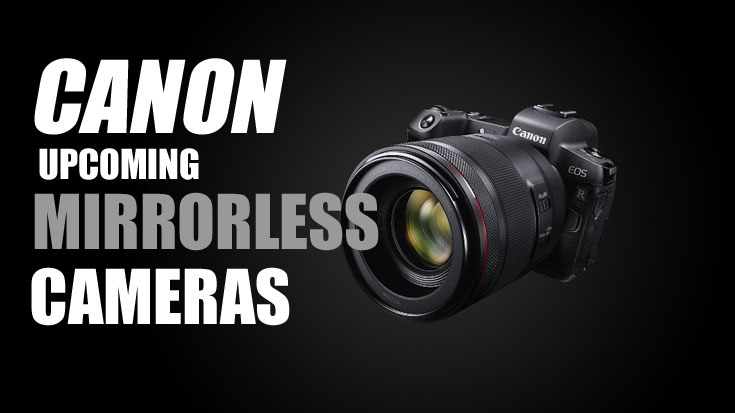
Upcoming Canon Mirrorless Camera 2025 – So get ready to be blown away by the list of cameras that are expected to arrive in 2025 from Canon. These cameras will lead the field in photography and videography on their terms. The Canon R1X flagship is still under development and is rumored to be announced in 2025. Apart from this, you also have rumors related to the Canon R5 C Mark II camera and its development. All these rumors have been summed up in the article below, and this article will be updated as we get any reliable information on upcoming cameras. So stay tuned, as we are going to bring out as much detailed information as possible related to Canon’s upcoming releases.
Nikon Upcoming Camera 2025 | Sony Upcoming Cameras 2025
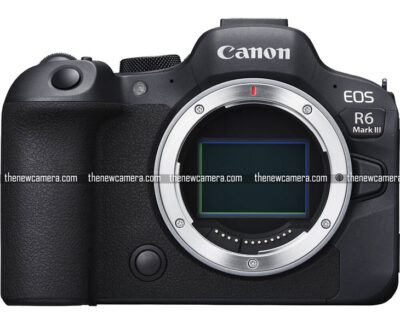
1. Canon R6 Mark III
The Canon R6 Mark III camera is rumored to feature the same 24-megapixel stacked CMOS sensor that we have seen in the Canon R3 camera, the camera will upscale the market competition to the next level with its features resembling with Canon R3, the Canon R6 Mark III camera will arrive sometime in 2025 (possibly in Q2-Q3 of 2025).
Canon R6 Mark III Rumored Specification
- 24mp (same sensor as of the EOS R3 sensor)
- Mechanical shutter / Electronic Shutter
- No mentions of stills FPS
- Improved DIGIC X, but no DIGIC Accelerator
- CFexpress & SD UHS-II card slots
- 4K 120P
- FullHD 240P
- Same EVF as the EOS R5 (So no eye-controlled AF)
- Improved IBIS performance
- Improved focus sensitivity
- Slightly heavier body (Nothing you’re likely to notice)
- Same 3.0″ LCD size (no mention of resolution)
- No mention of autofocus capabilities
From the specs, it looks like we will be getting a Canon R3 budget edition soon, the next update is about next APS-C format camera, the Canon R7 Mk II.
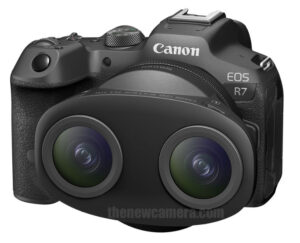
2. Canon R7 Mark II
The Canon R7 Mark II camera announcement is also due. As per the latest rumors, the camera will have a 32-megapixel stacked CMOS sensor. Not only that, but the camera will also have a readout speed of somewhere around 6 milliseconds, 4K video recording capability up to 120 frames per second, and 6K video recording at 60 fps.
Canon R7 Mark II Specification [Expectations ]
- 32.5MP Stacked APS-C CMOS Sensor
- Dual Pixel CMOS AF II
- 4K 120p 10-Bit Video, HDR-PQ & C-Log 3
- External 6K ProRes RAW Recording
- 40 fps E. Shutter, 15 fps Mech. Shutter
- Sensor-Shift 5-Axis Image Stabilization
- 3.69 m-Dot OLED EVF
- 1.6m-Dot Vari-Angle Touchscreen LCD
- Sensor-Shift 5-Axis Image Stabilization
- Dual UHS-II Memory Card Slots
- Multi-Function Shoe, Wi-Fi, and Bluetooth
The sources mentioned “Canon R7 Mk II is about to enter the production pipeline”, that means if the rumor is true then we will have a Canon R7 Mark II camera on or before Q4 of 2025.
3. Canon R1X
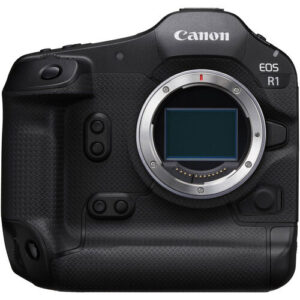
Rumors about the Canon R1X have also started circulating. It’s said to be a megapixel monster with a high-resolution sensor and faster readout speeds. So far, this is what we know. Other unconfirmed reports suggest that Canon is testing several prototypes with sensors ranging from 50 MP to 80 MP. We might see an 80 MP Canon R1X development announcement sometime in 2025.
Canon R1X (Unconfirmed Spes)
- 45-80 MP DPAF Sensor under test
- 8k 60FPS
- Dual CF Express Type B Card Slots
These are the initial specs available for the Canpn R1X camera.
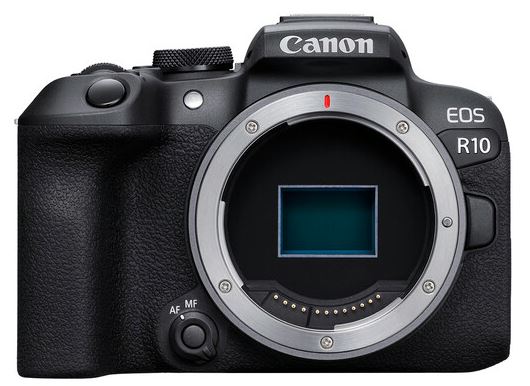
4. Canon R10 Mark II
Canon R10 Mark was announced back in May 2022, if we look back at DSLR time Canon was updating the mid-range Rebel series every 1.5 – 2 years, so we are expecting the Canon R10 Mark II camera for sure will arrive in Q3 or Q4 of 2025. The camera will use the same sensor as we have seen in the Canon R7 Camera with almost the same core specs we have witnessed in the Canon R7. Although the body design and card slot options will remain the same as of the Canon R10.
Canon R10 Mark II Rumored Specification
- 32.5MP APS-C CMOS Sensor
- Dual Pixel CMOS AF II
- 4K60 10-Bit Video, HDR-PQ (NO lOG)
- 15 fps Mech. Shutter
- 2.36m-Dot OLED EVF
- 1.6m-Dot Vari-Angle Touchscreen LCD
- Sensor-Shift 5-Axis Image Stabilization
- Single SD Card Slot
- Multi-Function Shoe, Wi-Fi, and Bluetooth
The next APS-C Camera in our list belongs to the Canon V-Series [Vlogging Series]

5. Canon Retro Styled Camera – The Canon QL 17 G Mark 3
We may see a Canon retro-style camera competing with Nikon ZF or Zfc cameras shortly. Yes, it is possible since during an interview when the interviewer asked about the possibility of a Canon retro film-style camera, a Canon representative said there is a significant number of people who really love film cameras and the more vintage look. Therefore, there is a possibility that Canon will address those needs from the industry.
This indicates that Canon is considering a retro-style camera in its lineup. The rumor is not new; before this interview, we published a rumor back on March 11th, 2024, According to the rumor
Early prototypes of to be announced Canon retro camera design are inspired by the image above (Canon QL 17 G Mark 3). One of the early prototypes is said to feature a full 24-megapixel CMOS sensor and a vari-angle display screen. Not only full frame there is which possibility that an APSC sensor-based retro camera is also under development. We do not have any Fixed time for the announcement of these retro-style cameras they are still under test and in the prototype stage. So if we expect it to arrive too early then it would be somewhere between the end of 2024 are the beginning first quarter of 2025
So, that is the latest set of information we have related to Canon’s upcoming retro-style camera.
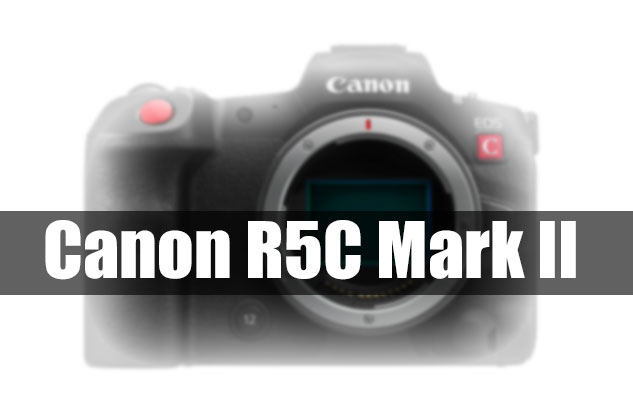
6. Canon R5C Mark II in 2026
There are strong rumors that Canon may announce the R5C Mark II camera shortly, just like we had with the previous announcement of the R5C. But as our source has suggested, yes, there are plans for the development of the Canon R5C Mark II camera, and the new Canon technical advisory team is also interested in bringing that camera to the consumer base. However, it’s not planned for 2024 or even 2025. As per their timeline, the Canon R5C Mark II camera is planned for 2026.

7. Canon V10 Mark II
Canon generally updates their compact cameras in one or two years, that’s the update cycle they generally keep with their compact cameras. The Canon V10 was announced back on May 2023, and now on May 2025 it will complete the two-year mark of its announcement date and hence it will become eligible for an update. The Canon V10 Mark II is expected to arrive in Q4 of 2025, (if everything goes as scheduled inside Canon). The upcoming camera will have a subtle update in the core specifications.
Expected Upgrades for the Canon V10 Mark II:
- 24.2MP 1″ CMOS Sensor
- UHD 4K up to 60 fps
- Full HD up to 120 fps:
- Dual Pixel CMOS AF II: Advanced autofocus system for accurate subject tracking in video and live streaming.
- Web Camera Compatibility with UVC Support: Seamless use as a webcam for live streaming.
- 1.04M-Dot 2.5″ Articulating Touchscreen LCD: Larger and higher-resolution screen with full articulation for easier framing in different orientations.
- Wi-Fi 6 & Bluetooth 5.2
- Vertical Video Capture with Auto Orientation
- Built-in adjustable Stand with 180° Range
- Improved Battery Life
- USB-C Charging & Power Delivery
Canon V10 Mark II Core Specification is based on our expectations, not a rumored core specification of the camera.

8. Canon Modular Cameras for 180° and 360° VR Video
Canon prototypes of 180-degree and 360-degree-based cameras and the initial prototypes were displayed in Yokohama, Japan (2023). These cameras are multi-purpose cameras able to record 3D 360 spatial videos too for Apple Vision PRO, we are waiting for their official announcement in 2025.
From Canon Patents – Expected List of Cameras

9. Canon V100 – Canon Vlogging Camera with Large sensor
Canon next next-generation vlogging camera patent surfaced in Canon patents as you can see in the image above, the design being shown in the patent is slightly different from the existing Canon V10 camera. Also, the sensor area shown in the figure resembles an APS-C sensor instead of a 1-inch sensor being used in the Canon V10 camera, take a look at the images below
Canon V1 / V100 Expected Specification
- 24.2MP APS-C CMOS Sensor
- DIGIC X Image Processor
- Dual Pixel CMOS AF II
- 4K30 Video, 4K60 with Crop;
- HDR-PQ
- IBIS (Enhanced EIS+ IBIS + OIS for Video)
- Background Defocus
- Face Priority AE
- Movie for Close-Up Demos Mode
- Vertical Movie Mode
- Directional Capsule Mic and Windscreen
- 15 fps E. Shutter
- No EVF
- 1.04m-Dot Vari-Angle Touchscreen LCD
- Wi-Fi and Bluetooth
Canon will surely expand its V- series vlogging cameras in 2025-26, since they are in very high demand and people are waiting for a direct compatitior of Sony ZV-series of cameras.

10. Canon Vision Pro – Virtual Reality Headset
Just like Apple Vision PRO, Canon is also working towards its own range of VR headsets, as usual, the VR headset is different from Canon MREAL X2, We all know that Canon is in partnership with Apple, as they are making special spatial Lenses for their Apple Vision PRO, and their content can be directly used on Apple iPhone platforms and the VR headset for augmented reality purposes. You can read the Full patent details here
When the Canon Vision Pro is Coming
as usual Camera makers like Canon take 2-3 years, once their patent is published, they do extensive research and testing beofre the announce the commerical version of the product. So, we can expect it sometime in 2026.

11. Canon Hands-Free Vlogging Compact Camera
Canon is also working in Hands hands-free vlogging camera, as you can see the cylindrical style camera can rotate up to 360 with a large display attached to the rear side of the camera. The Display part can stuck of smooth surfaces like Glass windows it’s very clearly mentioned in the patent. I am very much impressed by the design of the camera and let’s hope we will see the announcement of such a camera soon from Canon.

One more closer image of the camera
Canon future vlogging compact camera, The camera features a brand new moveable cylindrical camera unit that detects and tracks human + body face very effectively. The rear side of the camera we have a Display unit which is used for customization of camera basic settings.

12. Canon Patent Neckband Style Camera
The concept is truly unique and it will assist content creators in producing videos without exerting too much effort in holding their camera and creating content. more about the patent details here

13. Canon V1 – Fullframe Vlogging Camera
The Next Fullframe Vlogging camera that surfaced from the patent may use the Canon R8 Sensor and compact gimbal-style design, the overall design is very unique and advanced. But, this patent was done by Canon back in 2020, Maybe their marketing team waiting for the right time to announce such a product, otherwise it will become a too-advanced product without any direct competitor on the Row. we all know what happened with the Sony DSC R1 camera, it was an APS-C style compact camera announced back in Sep 2016 by Sony. But, at that time people were not ready for that type of advanced camera neither Canon nor Nikon were able to put a direct competitor of the same, so Sony never announced the next version of the same. Similarly, I think Canon’s marketing team is waiting for the right time. 165
Get LIVE RUMORS –> FACEBOOK | TWITTER | INSTAGRAM to get live news + Canon rumors 24X7
See a list of Canon cameras announced from 2018 – 2024 – Canon camera timeline
By admin, on December 11th, 2024
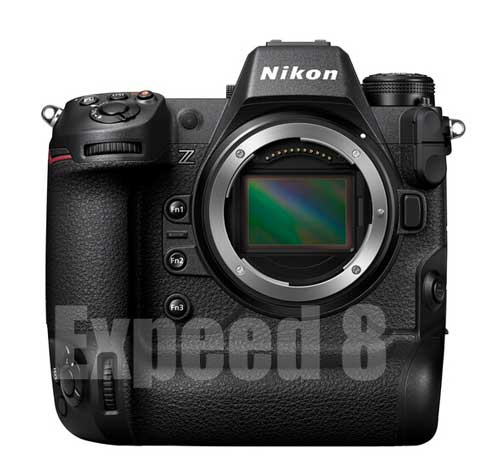
Nikon Z9 will get the Expeed 8 image processor. That means we will get a massive update in the processing power of the existing Z9 camera, which will directly affect the autofocusing algorithms, specifically 3D object tracking, continuous shooting speed, video recording resolution, and frame rate. So for sure, we will have a massive update in the camera’s core specifications. The camera is expected to arrive in the fourth quarter of 2025.
List of FX Bodies to be announced with Expeed 8 Image processor in the near future
- 2028 — Z50 III, Z6 IV
- 2027 — Zf II [Late 2026 or early 2027], Z8 II
- 2026 — Z30II [Q1 of 2026 or Late 2025]
- 2025 — Z9 II, ZfcII (bold indicates likely EXPEED8 cameras)
- overdue: Z5II, Z7III
If we closely study the announcement pattern of Nikon then after the Z9 II, the most eligible FX-format Mirrorless body is the Nikon Zf II waiting for an update.
Stay tuned will will bring more updates soon.
Follow us on our social pages FACEBOOK | TWITTER | INSTAGRAM to get live Camera News + Nikon Rumors 24X7.
source
By admin, on December 11th, 2024
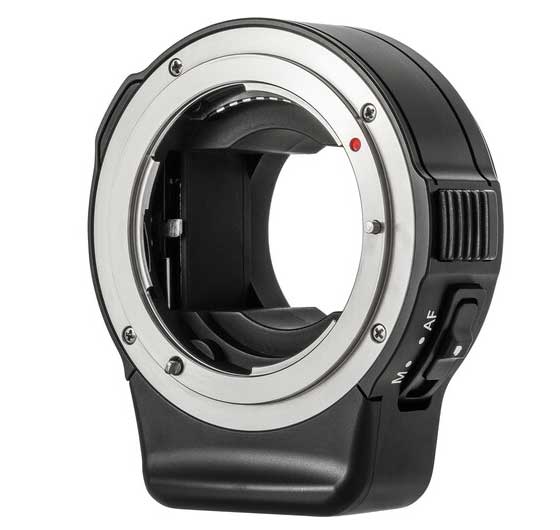
Let’s talk about Nikon’s upcoming lens adapter, which features a built-in autofocus motor to properly enable autofocus with AF, and AF-D lenses that require a motor. Right now, none of the FTZ adapters are compatible with AF/ AF-D lenses.
These adapters will have a somewhat retro design and look fabulous when paired with the Nikon ZF camera. The adapter’s name is not confirmed yet; it might be called FTZ III, FTG SC, or something else, so we are not very sure about the name at this point.
When will it arrive?
The adapter is expected to arrive in the fourth quarter of 2025. Many people have been waiting for such an adapter for a long time. Some third-party Lens adapters are available (AF/AF-D to E Mount), but they don’t do the job perfectly.
stay tuned more updates coming
Also see – Nikon Z30 Mark II – Expected Specifications and Arrival Timeline
Follow us on our social pages FACEBOOK | TWITTER | INSTAGRAM to get live Camera News + Nikon Rumors 24X7.
The post “Nikon FTZ III / Nikon FTZ SE – Retro Style Adapter with AF Motor Coming in 2025” appeared first on thenewcamera.com
By admin, on December 10th, 2024
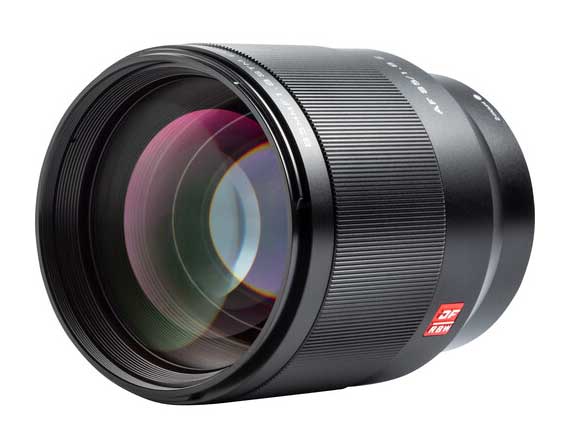
According to the latest rumors surfaced over the web, we may see third-party lens options from Chinese lens makers in the year 2025. They are actively not only developing a wide range of autofocus lenses for brands like Sony E, Nikon Z, and Fuji X, they are also actively working on a collaboration with Canon RF Mount, one of the names that come in front of us is Viltrox.
Now they are working for the access of both full-frame and APS-C format lenses of the RF/RF-S Mount, but due to the complexity of technology and the entire process that a third-party lens maker has to follow before they put their lenses in the market, it is still uncertain whether the lenses will reach the market by 2025 or not. But they are putting in maximum effort to bring out new lenses for at least the Canon RF-S mount in 2025.
Now which APS-C lens we are expecting to be announced first for the Canon RF-S mount? The sources share the 1.2 LAB series lenses, specifically mentioning the Viltrox AF 35mm F1.2 LAB, which is expected to be the first, additionally followed by a series of F1.4 lenses that compete against Sigma’s recent offerings.
Another good news is that the expansion is not only limited to Viltrox at the moment, as two more third-party lens makers are involved to get access and make Canon RF mount lenses. However, the names are unclear yet, and we will bring updates as soon as they become available to us.
The post “Canon to Expand Third-Party Autofocus Lens Options in 2025″ appeared first on thenewcamera.com
Get LIVE RUMORS –> FACEBOOK | TWITTER | INSTAGRAM to get live Camera News + Canon rumors 24X7
|
KEEP THIS BLOG ALIVE - Support New Camera Buy Canon Lenses, Buy Music CD or Digital Camera at amazon it helps this site, and you do not pay anything extra, it is just a way to help support this site.

|



























